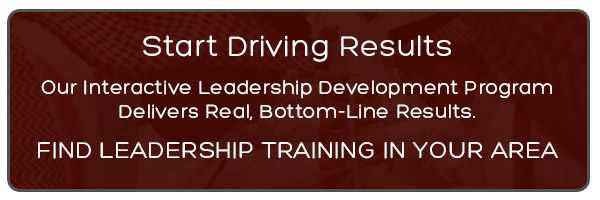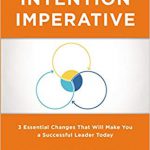How you drive results in your organization has a significant impact on your productivity and business growth.
 What does it mean to drive results? And why does driving results matter?
What does it mean to drive results? And why does driving results matter?
Let’s begin by answering the second question with a question: How often does your team float great ideas that go nowhere?
Driving results is critical as a leadership core competency because it is your job to make sure that things get done: that initiatives get completed, goals are met, and business growth is achieved. You can not accomplish these key responsibilities without the ability to drive results.
So, what does “drive results” mean in this context? A leader who drives results is able to focus on what is important and create a sense of urgency while successfully managing multiple priorities by implementing tracking and follow-up mechanisms to ensure rapid progress. A leader who drives results identifies and understands issues, asks the right questions, and makes decisions to take action that is consistent with the available facts and risk.
There are 3 key leadership skills that leaders and managers can engage to develop their Drives for Results core competency: accountability, decision making, and asking the right questions.
Accountability
When your people are accountable for their own decisions, work, and results, the effectiveness of your organization greatly increases. Of the three skills that contribute to driving results, accountability has the power to lift your whole team to higher performance. Holding yourself and others accountable for decisions, actions, timeliness, and quality differentiates a winning team from an average or failing one.
Leaders who excel at driving results effectively manage the tension between inspecting the daily or weekly execution of project plans and giving autonomy to team members to be responsible for their own work, stepping up to project completion. Individuals may require differing levels of supervision, but the accountability framework for all employees becomes stronger the more managers empower others to make decisions and drive results for themselves.
There is a well-known business parable that characterizes four people named Everybody, Anybody, Somebody, and Nobody. There was an important project, and Everybody was sure that Somebody would do it. Anybody could have done it, but Nobody did it. Somebody got angry about that because it was Everybody’s job. Everybody thought that Anybody could do it, but Nobody realized that Everybody wouldn’t do it. It ended up that Everybody blamed Somebody when Nobody did what Anybody could have done.
Holding others accountable is an essential practice for leaders who expect to drive results. However, whether you hold yourself accountable can motivate or demotivate others to make and keep commitments. Managers who hold employees accountable but neglect to hold themselves accountable can derail the team or individual motivation needed to drive projects to completion.
Accountability starts with you. Don’t attempt to delegate accountability to deflect blame from yourself. Leaders with accountability shoulder responsibility, fix the issues, and implement processes to prevent future mishaps.
Decision Making
 Driving results also requires making well-thought-out decisions. When your decisions align with your values and your team is included in the decision-making process, achieving results becomes a shared set of goals.
Driving results also requires making well-thought-out decisions. When your decisions align with your values and your team is included in the decision-making process, achieving results becomes a shared set of goals.
Do you consult others when you make decisions? Do you seek perspectives from your team? Or, do you decide alone? The way you approach a decision may depend on the nature of specific situations. Monetary decisions, organizational decisions, corrective decisions, and a variety of other resolutions might be handled very differently with each type of decision. Leaders who drive for results find ways to link their organization’s values with the major and minor decisions made every day.
When the values of your organization are understood and followed, making the right decisions and creating buy-in from your employees are easier. Whenever possible, everyone ought to know why the decision was made, not because of rules, regulations, policies, and procedures, but because the decision is aligned with the values that guide them. Values answer the question of how you go about doing business. They answer how organizations should manufacture products, deliver services, market themselves, and treat customers—and also how managers treat employees.
Leaders who focus on finding more than one solution when making a decision, as opposed to jumping at the first solution that comes to mind, are apt to find in their ideas one that addresses the issue better than alternatives.
Make Great Leadership Your Daily Habit. Learn How >>>
Asking the Right Questions
 Leaders who know how to ask the right questions have a greater ability to collect the information and knowledge they need to make good decisions. The concept of “Afters” and future-based questions are very popular topics with managers in our leadership training classes. Afters helps leaders and managers ask the right questions to make good decisions and drive results. Afters describe the ultimate goal.
Leaders who know how to ask the right questions have a greater ability to collect the information and knowledge they need to make good decisions. The concept of “Afters” and future-based questions are very popular topics with managers in our leadership training classes. Afters helps leaders and managers ask the right questions to make good decisions and drive results. Afters describe the ultimate goal.
A developer built a residential neighborhood and hired an architectural firm to design a swimming pool for placement at the entrance of the new community. “A big pool,” he said when explaining the project to the architect. When the firm finished and presented a scale model of their big swimming pool design, the developer paused and then said, “That’s not at all what I wanted.” Dismayed, the architect who believed he had followed the builder’s request for a big pool asked, “Then what DO you want?”
What happened next illustrates the concept and importance of Afters. The developer responded, “When a family drives by the new community, I want the children to feel excited by slides and attractions like you’d see at a water park and shout ‘Mom and Dad, I want to live there!’”
Had the developer started with the Afters before the architect invested time and resources into building a scale model of a large swimming pool, he would have effectively communicated his vision of what has to be achieved as a result of constructing the pool area: “Mom and Dad, I want to live there!” That is the Afters effect, and the Afters effect should always be stated at the beginning of a project, not the end.
The best way to get exactly what you want, the first time, is to find the Afters by asking future-based questions that focus on results and deliverables. Ask yourself: “What am I looking to achieve?” and “What must happen after this project is done for this to be successful?”
Next, dig deeper with second-line questions. People are motivated by their wants, but they also need to define what their companies need. Second-line questions reveal the who, what, where, and when of a project or initiative and fill in the blanks to get the whole picture. Subtle phrases such as, “Tell me more,” or “Say more about that” are useful prompts when trying to understand someone else’s request. Second-line questions also help to draw out additional information, such as how to prioritize multiple goals or results.
Finally, when tasked by someone else, after you have asked second-line questions for clarity, ask one more: “Anything else?” and then listen. Once the desired results and priorities are determined, repeat the details back to make sure you understood. Give clear options for how the work and results can be achieved and let stakeholders choose their own path to completion.
A leader who is effective at driving for results is keenly focused on what is most important to achieving the strategic goals of the organization and is able to create a balanced sense of urgency around those tactics that contribute to the strategic direction. The leader makes decisions based on the ability of his or her associates to identify and fully understand the business need—or what has to happen after the project is complete for the project to be considered a success. The leader then takes action consistent with the available facts and information.
Driving for results sometimes requires quick action. At other times, it is part of a long-term, strategic vision. The results-driven leader plans, measures, tracks, revisits, and holds people accountable. Irrespective of whether an initiative takes days, weeks, months, or years, leaders who formulate and execute plans succeed in improving the performance of their teams and the value of their organizations.
Make Great Leadership Your Daily Habit. Learn How >>>
Leadership Core Competency: Drives for Results
Focuses on what is important and creates a sense of urgency, successfully managing multiple priorities. Implements tracking and follow-up mechanisms to ensure rapid progress. Identifies and understands issues and takes action that is consistent with available facts and risk.
Drives for Results Skills
- Accountability: Establishes clear responsibilities and processes for monitoring, communicating progress, and measuring results.
- Decision Making: Uses the information available and best judgment to make a timely decision.
- Asking the Right Questions: Probes the thought process of others and asks the right questions to uncover root causes to problems and better solutions.
The Leader’s Toolkit: Try this to improve how you drive for results
Are you accountable to organizational values when you decide on actions that affect others?
- List the stated values of your organization.
- Describe in writing how each value should influence decisions made on your team or by you or someone in your organization.
The Afters of this simple exercise is to always drive decisions based on holding yourself accountable to the values you claim as an organization.






